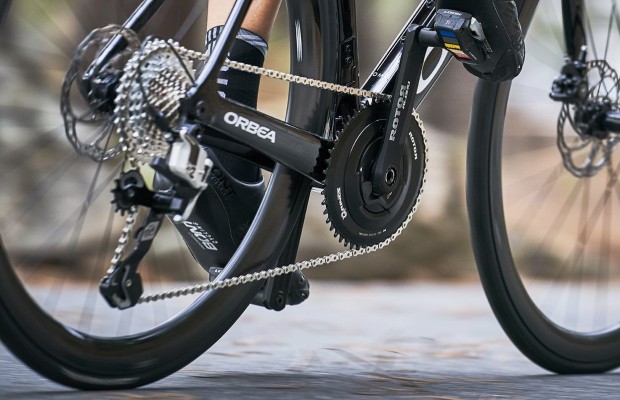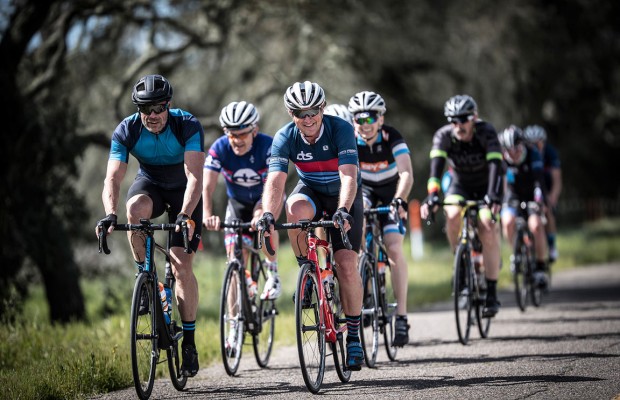Change wheels if you want to transform your bike's behavior
The wheels are the component that most influences the behavior of a bike and can totally transform its character. Choosing the right ones can make our bike become exactly the way we need it to be.

How to get your bike to behave the way you want it to behave
Very often, those who buy a bike are guided by aesthetic criteria, paying attention to fashions, looking at parameters such as weight or simply acquiring what best suits their budget, without paying attention to the dynamic characteristics of that particular bike, determined by its geometry and construction or whether its dimensions are correctly adapted to their physiognomy.
Then comes the frustration when we start to notice that the bike doesn't behave as we wanted it to. In some cases in the form of a sluggish bike in which when we stand up we do not perceive a clear progress or that when linking curves in a descent we have to put everything on our side to get the bike into the curve and let alone change the inclination to link several consecutive ones.
RECOMENDADO

Black Friday 2025 cycling bargains: save on Garmin, POC, Maxxis and more

Black Friday Garmin 2025: the ultimate guide to choosing your GPS at the best price

How to wash your cycling clothes? 10 keys to make them always look new

Cycling can help you fight the effects of the time switch

Important keys to make your training work

Easy to apply tips for riding faster

At the other extreme, the rider is faced with a tremendously agile and nervous bike, which is difficult to let run in a straight line due to its unsteadiness and which requires a great mastery of the machine, responding in an exaggerated way to every slightest insinuation on the handlebars.
It is true that we are talking about the two extremes and that in between there are a lot of grey areas in which to find the type of bike that best suits the type of cycling we do. A weekend touring cyclist does not have the same needs as someone who trains hard to improve their times or even competes. However, we still see supersport bikes among the former. The opposite case, although it also occurs, is less common because the sports cyclist usually has clearer needs.
When this often happens the rider starts out thinking that it is a lack of adaptation, but as time goes by he starts to realise that maybe that bike is not the most suitable for what he was looking for. Then the search for a new bike begins.
The influence of wheels
However, few people realise that wheels play a major role in defining the character of a bike's performance. In fact, we also find cases of those who buy spectacular profile wheels just because they look good, without considering how they will affect the handling of their machine or whether they are suitable for their technical capabilities.
With the exception of high-end bicycle models, it is not uncommon for manufacturers to use only adequate wheelsets in their standard set-ups, which in some cases fall far short of a performance that matches the quality of the frame to which they are attached.
These basic wheels are usually models with aluminium rims with a rim height between 30 and 40 mm, close to low and without any aerodynamic purpose. They are often not very stiff models and their weight is usually well above average. In most cases, they are often responsible for the sluggish behaviour of many mid-range and entry-level bikes of the brands, which adds to the relaxed geometries that we usually find in this segment of bikes.

When this is the case, a change to lighter wheels is immediately noticeable in the form of quicker reactions, both when changing direction and during acceleration and changes of pace.
Moving on to the higher end wheels we find that carbon wheels with aerodynamic profiles have become increasingly popular among those replacing wheels on their bike. However, they rarely take into account drag reduction characteristics and are chosen purely for aesthetic reasons.
If the profile is low, up to 45 mm, the influence on handling compared to medium profile aluminium wheels is usually not too great. The main benefit of this leap to quality wheels, apart from the weight, is that they tend to be stiffer laterally than the basic models, which results in greater precision when steering the bike and helps us to trace the curves where we choose without having to constantly correct.
The next step up would be high profile aerodynamic wheels. This type of wheel demands a certain technical mastery of the bike from the rider. Not only because of the influence of crosswinds, although current designs have managed to tremendously improve stability in these conditions, but also because the increased mass on the outside of the wheel also increases inertias, which forces the rider to take corners with greater anticipation and decision on the part of the cyclist.

Finally, there are ultra-light wheels with low profiles, a wheel format that has fallen into disuse, although some brands such as Fulcrum have models with these characteristics in their catalogues. This type of wheel gives the bike an electric feel, maximising the ability to change direction and making acceleration much easier. In combination with a sporty and climbing bike, they can give us the feeling of being able to do whatever we want with the bike.
Change wheels or choose another bike?
As we have seen, the wheels give us a good option to play with the behaviour of the bike, even, if we have several sets of different characteristics we can combine their use depending on the route we are going to face that day.
However, there are cases in which the bike does not fit us, for example if we have chosen a size that is too big or too small. Also because we have chosen a bike of a style that is not suitable for our needs.

A bike with an aerodynamic cut makes little sense if you live in a mountainous area, although you can adapt its behaviour with a set of ultralight wheels. The opposite is also true if we live in the middle of the plateau.
Beyond this, it doesn't make sense to have a bike with a sporty geometry and aggressive behaviour if our aim is to do long routes without any kind of rush and where a gran fondo style bike would provide us with a more relaxed position, a stable and intuitive behaviour and greater comfort.
In these cases, although by replacing the wheels we could adjust the behaviour of the bike, perhaps the most honest thing to do would be to admit that we have chosen the wrong bike and choose one that is perfectly suited to the use we are going to make of it.